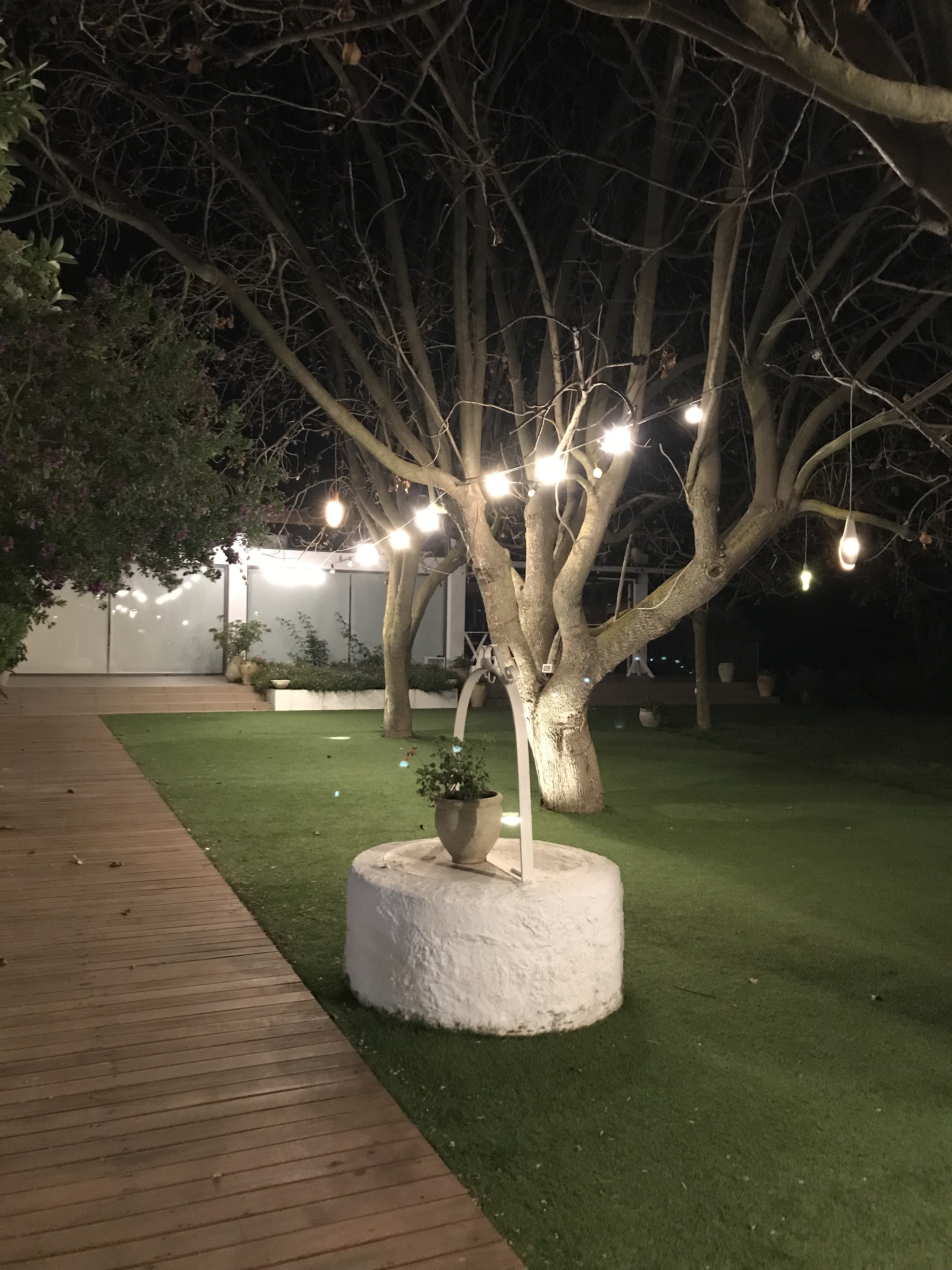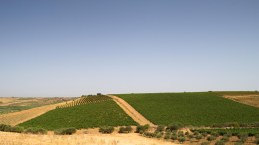Back again…
So after the tasting at Feudo Arancio it’s back on our bus and off to Settesoli winery and our overnight stay at their Hotel and restaurant IL VIGNETO Resort.

Super fast check in, dump our bags and a very quick shower it was already time for dinner, we walked through their beautiful gardens to a delightful garden room for an introduction to who they are, dinner and of course some of their great wines.

Let’s start by telling you about Settesoli, they are a Cooperative, but not just any “COOP”. They have 2000 growers with 6000 Hectares of land under vines. You can check out a really good video at the end of the blog made by them.
The growers work with the central winemaking and vineyard team, this gives the same quality across all of the 2000 growers. Made up over 4 main villages in the Menfi area, these are Santa Margherita di Belice, Contessa Entellina, Sambuca de Sicilia & Montevago, making up the Terre dei Sicani district.
This was one of the first areas colonised in Sicily. Sicily is extremely diverse with people originating from North Africa, Greece, Spain & most of northern Europe.. This shows all over the island with many traditions, dialects and architecture.
After the war and at the end of the 1950’s there were no vineyards, plenty of olive & citrus trees and also vegetables, notably artichokes. The Coop was conceived in 1958, as a union of villages, to plant vines with the first vines planted on the 21st December.
Their first harvest was 7 years later in 1965. All the wines made in those days were the indigenous varieties of Grecanico, Inzolia & Catarratto and all sold off in bulk. 1n 1973 with a new president of the Coop the decision was taken to bottle their own wines, which happened the following year. These were initially for the Italian supermarkets but within 2 years the UK and USA became very important markets too.
Settesoli and its growers ARE the whole community, their wines are in all the shops, hotels and restaurants in the area.
The estate is Cantine Settesoli, with the wine brands, Settesoli, Inycon and Mandrarossa and a total production of 24 million bottles per year.
Mandrarossa is their flagship brand with only 500 hectares of the best plots and vines used. There are just 167 growers involved for their premium wines and 1 million bottles production. These vineyards have been selected after a study of their land, which started in the mid 80’s with the university in Milan. Key worldwide wine gurus played part also. Alberto Antonini – one of the top 10 flying winemakers in the world & Pedro Parra- from Chile who is known as one of the worlds greatest terroir experts. From their 500 hectares, 75 hectares with 37 growers involved to produce the best of the best wines which were launched in 2018.
With such a huge amount of land under vine this is a huge amount of work. Cantine Settesoli is involved in planning the vineyards, where to plant and what variety and then to the harvest and all that happens day to day in between. They really do need the best team in place to run such an enormous operation.
Now if they grew a couple of varieties this would be much easier, however they produce 32 grape varieties!.
Native Varieties grown: Catarratto, Frappato, Grecanico, Grillo, Inzolia, Moscato, Nerello Cappuccio, Nerello Mascarese, Nero D’Avola, Perricone, Vermentino & Zibibbo.
International Varieties grown: Aglianico, Alicante, Alicante Bouchet, Cabernat Franc, Cabernat Sauvignon, Chardonnay, Chenin Blanc, Ciliegiolo, Fiano, Merlot, Petit Mansang, Petit Verdot, Pinot Grigio, Sangiovese, Sauvignon Blanc, Syrah, Tannat, Trebbiano & Viognier.
For this team of vineyard managers and winemakers this is their combination to deal with.
32 Grape varieties, 5 soil types & 6 different areas and then you can throw in North, South, East & West slopes with elevations from 0 to 408 metres!.
Stick with me for a minute to explain in the next few photos (2 mins max)
The 5 main soil types.
Clay-rich soil
Its texture contains minerals, silica, iron and humus. It’s generally very compact and dense, with a high potassium content. It has a great water retention characteristic and absorption power, helping the vines to grow strong and healthy even during droughts. The wines produced from this soil are soft, extract-rich and with good acidity.

Limestone soil
Rich in nutrients, it is among the best suited to grow vineyards. Its white colour reflects the sunlight, supporting grape ripening. The right balance between rocky and clayey elements gives life to dynamic and structured wines, rich in minerals.
Silty soil
It contains silt, sand and clay and has the ability to absorb water and gradually release to the plants’ roots. It’s a compact and versatile terrain, nutrient-rich. The resulting wines are light, aromatic and elegant.
Medium mixture soil
Mainly containing sand and clay, which makes it permeable and very fertile, providing calcium and magnesium that are necessary for the vine’s nutrition. This soil produces elegant and full-bodied wines, with great persistence and balance.

Sandy soil
It contains sand and is mineral-rich and rocky, ensuring an excellent drainage and capillary distribution of the water. The roots penetrate deep into these soils, which are easy to farm thanks to their lack of compactness. The grapevine that grows on sandy soils produces delicate and aromatic wines.

These soil types are spread across 6 areas.
THE COAST: 0-55m elevation
THE SLOPES: 100-180m elevation
THE SEA TERRACES: 93-180m Elevation
THE HIGH HILLS: 316-408m Elevation
THE SAMBUCA LAKE: 180m elevation
THE MAGAGGIARO FOREST: 300-405m elevation.
The wines of Settesoli
So now we sit down for dinner and sample the wines. Starting with the most amazing raw fish to be paired with the Grillo.

Grillo, “Costadune” is perfect for this raw fish, it’s a citrus mineral beauty with perfect acidity.

With the first few starter courses… we also enjoyed the Grecanico, which had racing acidity, citrus blasts over your palate, super light and fresh and very mineral. After was the Zibbibo Secco, this wonderfully dry but aromatic wine had the most incredible nose of white flower blossom, on the palate it was dry and long. All these first 3 wines were fabulous with our incredible fish starters of the raw fish above, then Prawns, Octopus & Calamari.
Now for a Sauvignon Blanc, I really didn’t know what to expect here, was it going to be a French or NZ style… IT WAS A SICILIAN STYLE!
“URRA di MARE” This is one of their flagship wines that is sold all over the world.
This is Mediterranean SB. The vineyards are 100 metres above sea level in sandy soils.
Its made with 100% SB in stainless steel. They harvest at the end of July and only between 12 Midnight and 5am when the temperature is 10-15c degrees cooler than the daytime, then the grapes are at the winery before 6am.
Its a very complicated wine, initially its very green, herby, even basil with vegetal notes, then it becomes more tropical, lime citrus, mint and so fresh. Overall a really good wine, I think some of the greenness at the start will fade as it spends another 6 months in the bottle.
Now another Grillo, called “Bertolino Soprano” 2017. This time its a single vineyard Grillo which is aged for 16 months in concrete tanks and then 4 months in large untoasted oak barrels. The key difference from their standard Grillo vines is that they harvest normally 2.5kg of grapes per vine and for this wine its only 1kg from there best vines. 13,000 bottle production for this wine.
Immediately with the first taste this is a totally different style to anything I’ve ever tasted. It has the usual citrus, salinity and acidity, but now its more rounded on the palate with the slightest butter brioche notes complimenting. Now this wine was only bottled one month before it was opened. This wine in 6 months will be very very good.

Now the last white. Santannella 2018. Its a blend of Fiano 60% and Chenin Blanc 40%. The production of this is wine was 60,000 bottles. The Fiano is aged in barriques but the Chenin Blanc is in stainless steel. The wine is then blended and aged for 3 mths in the bottle before release. It’s a complex wine, white peaches, apricots, a smidge of vanilla, then the Chenin does its job and gives you some fresh citrus zestiness and ends with a wonderful mineral finish.
Now for a ROSE.

Perricone (grape variety) Rose, typical onion skin colour and the maceration is only 2 days. Its super light and fresh, red berry concentrated and medium bodied. Everyone loved this wine. They have tried making Rose from all their red grapes and have found that the Perricone grapes made their best Rose wine by far.

Next was the Frappato (grape variety), this red wine is generally drank slightly chilled, it’s fruity and light and actually pairs beautifully with fish as its quite mineral and salinity.
Amazing dinner, and as it was all fish we tasted the 3 Nero D’Avola after.
The Nero D’Avola was a delight, 2017 was a super hot start to the vintage with temperatures reaching 42c 1st week of August. Thankfully these temperatures didn’t continue and it ended with a good harvest a week earlier than normal. Ruby red in the glass with a touch of purple on the edges. Immensely fruity and fresh with black cherries and red berries.
“Cartagho” 2016 This is a real step up. 8 days in cement during maceration followed by a year in barrique, 4 months then in the bottle before release. This wine will age for a long time. Much more intense deep red colour. Blackberries, red berries still, but much more powerful, much more richness, with dates and pine needles too.
The last wine is Terre dei Sommacco, Nero D’Avola. Now this is one of their new flagship wines. Maceration for 6-8 days then maturing for 8 months in concrete and steel vats. The wine is then placed in large oak barrel for 19 months before bottling. Another 8 months in the bottle before release. On the palate this wine is elegant, delicate tannins soft cherry and blackberry fruit now. Beautifully soft, balanced and fresh.
It was definitely a busy first day in Sicily. It’s late need to get some sleep as it’s a very early start in the morning.
Check out this fabulous video from Mandrarossa before you go.
Here are a few links to Mandrarossa
website: https://www.mandrarossa.it/en
Twitter: MandrarossaVini
Instagram: mandrarossawines



































